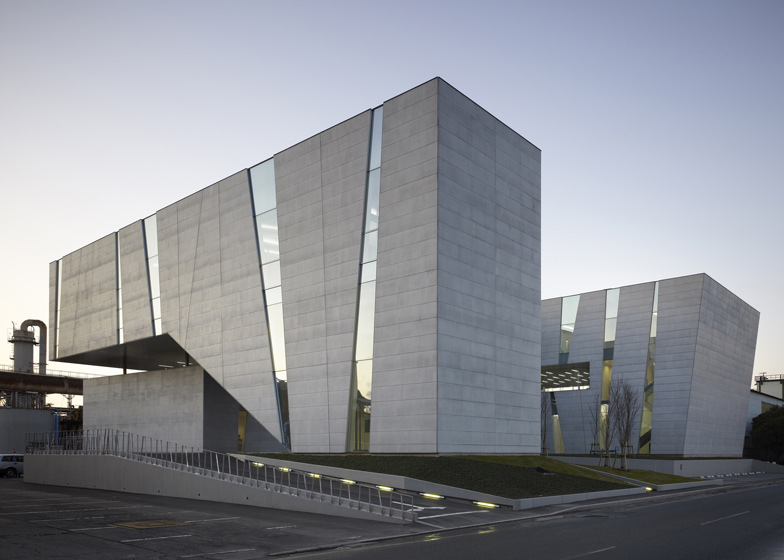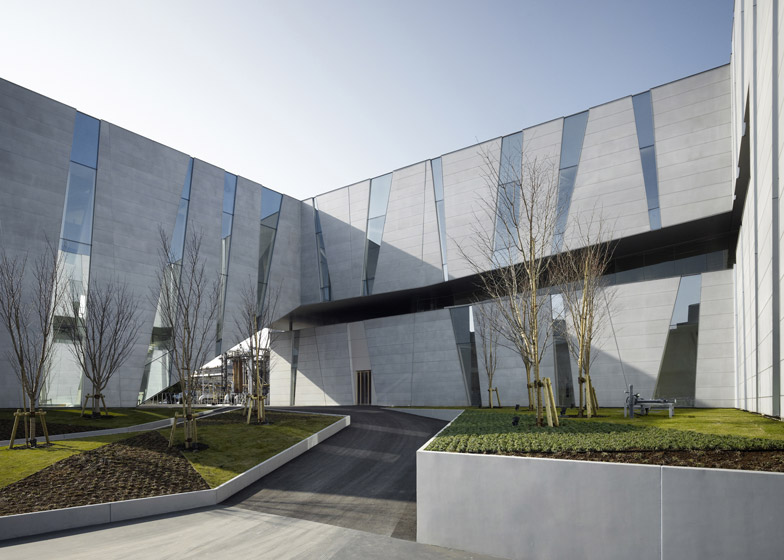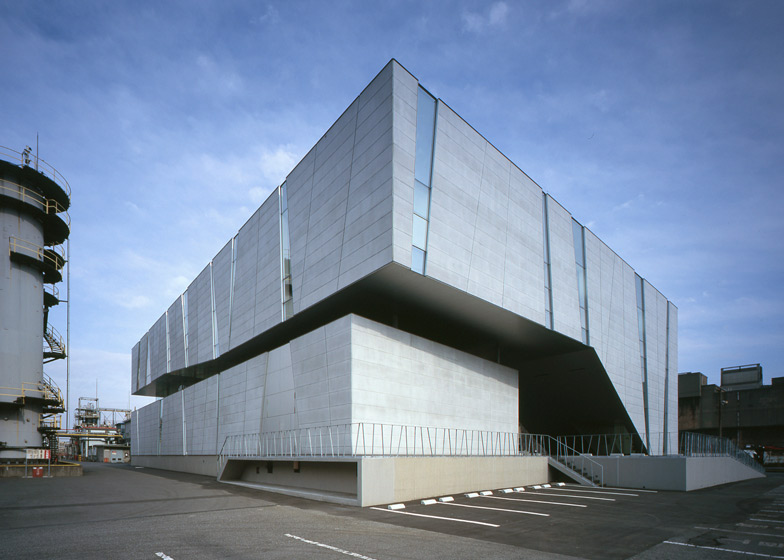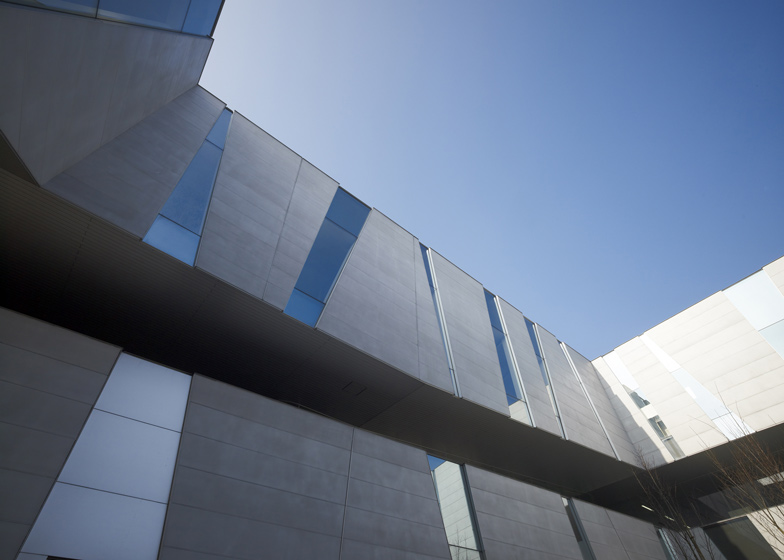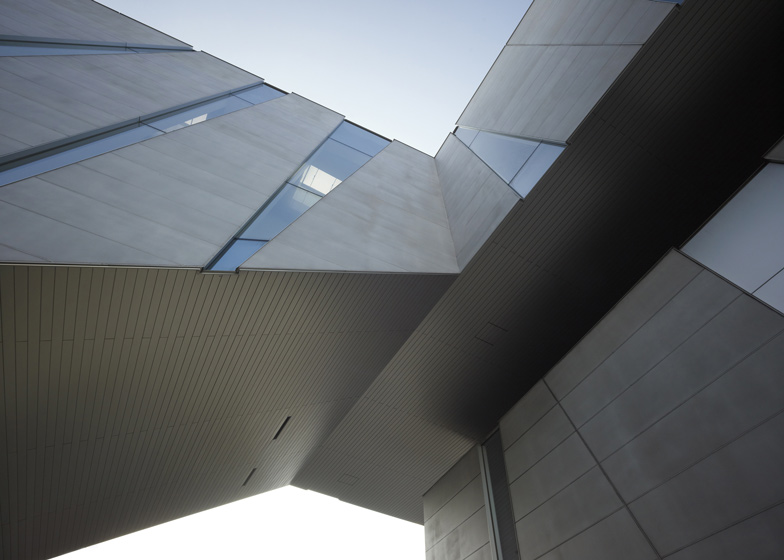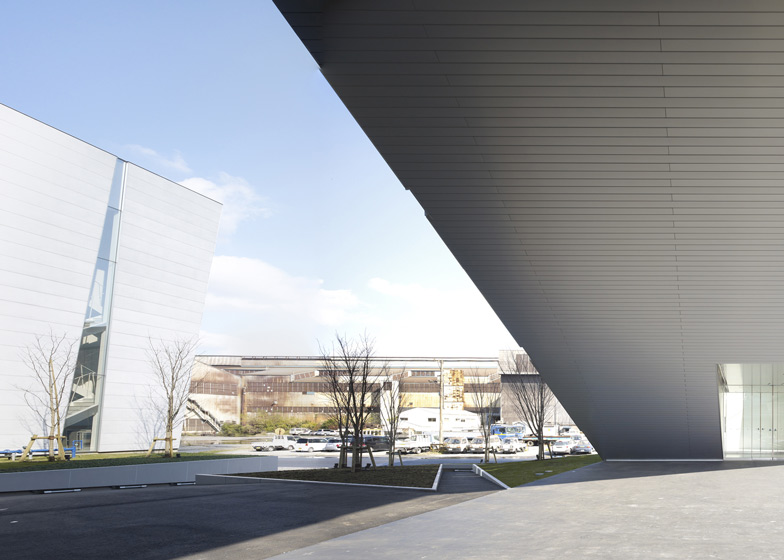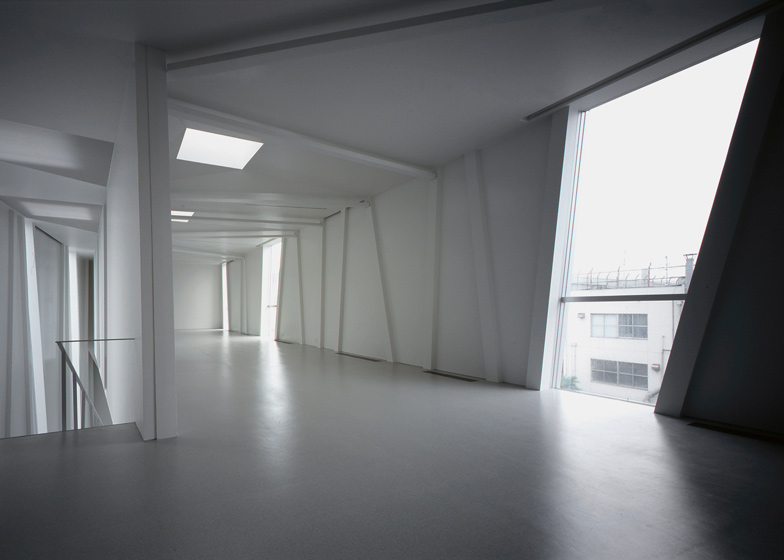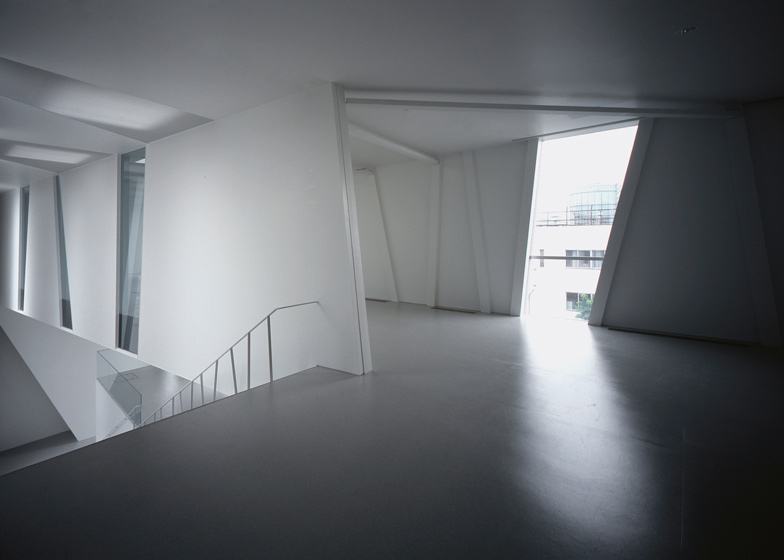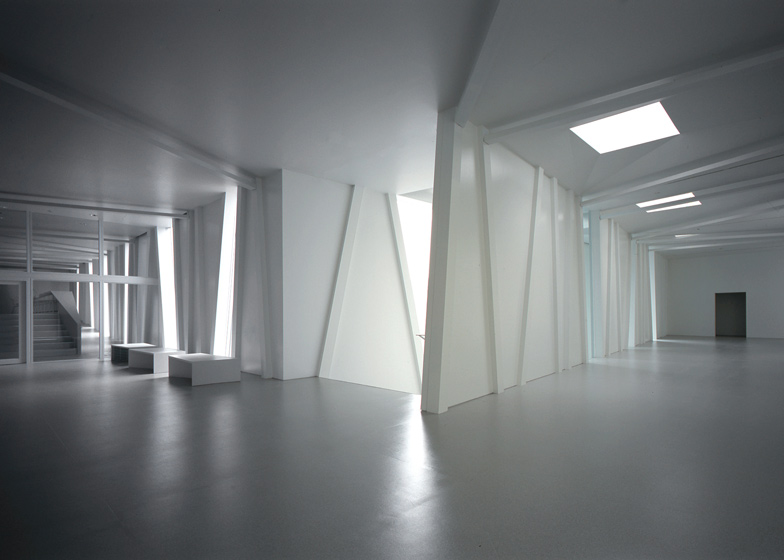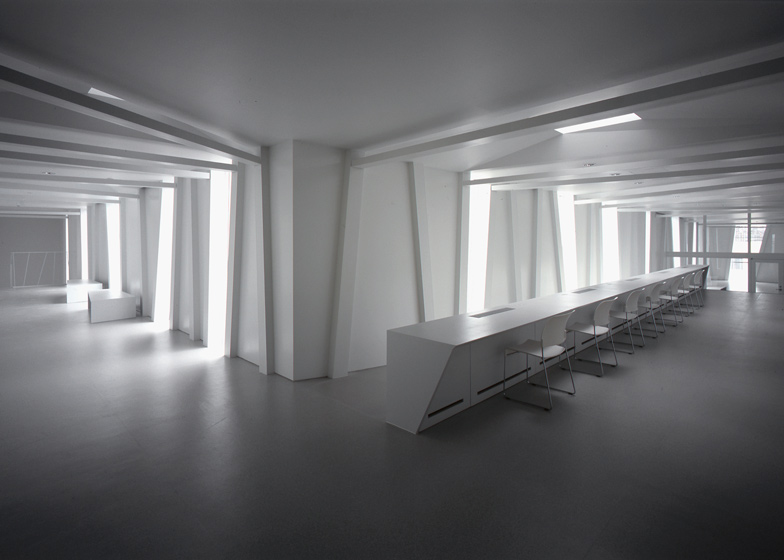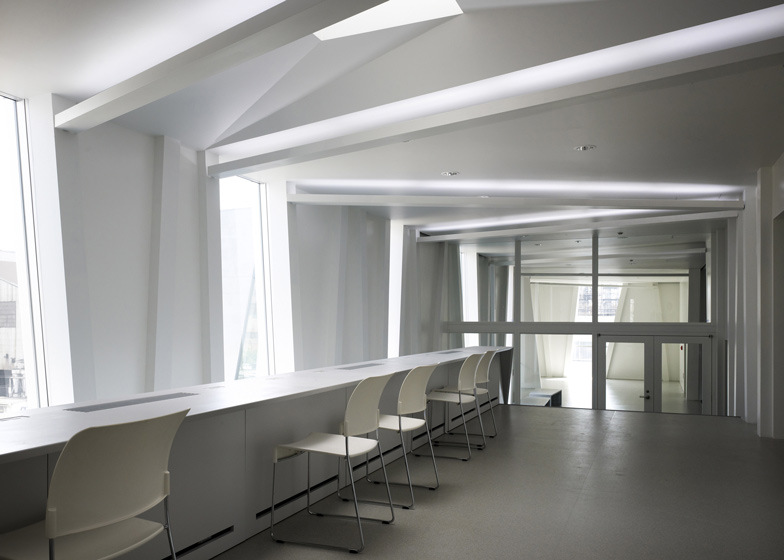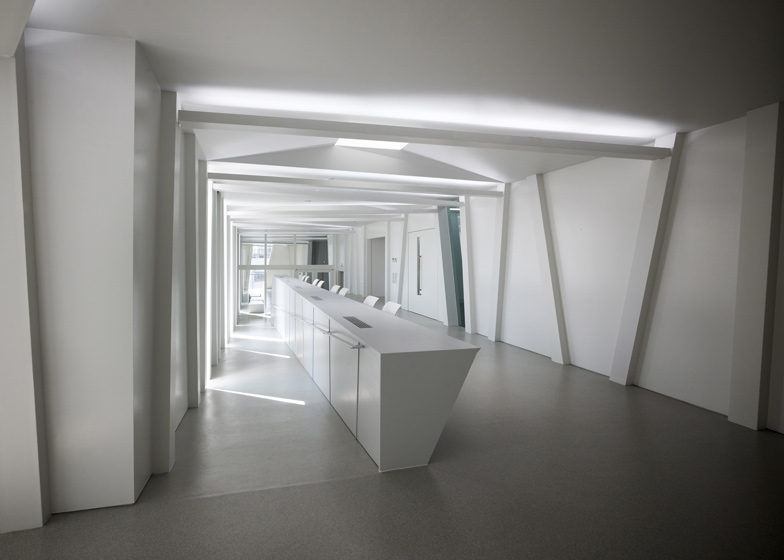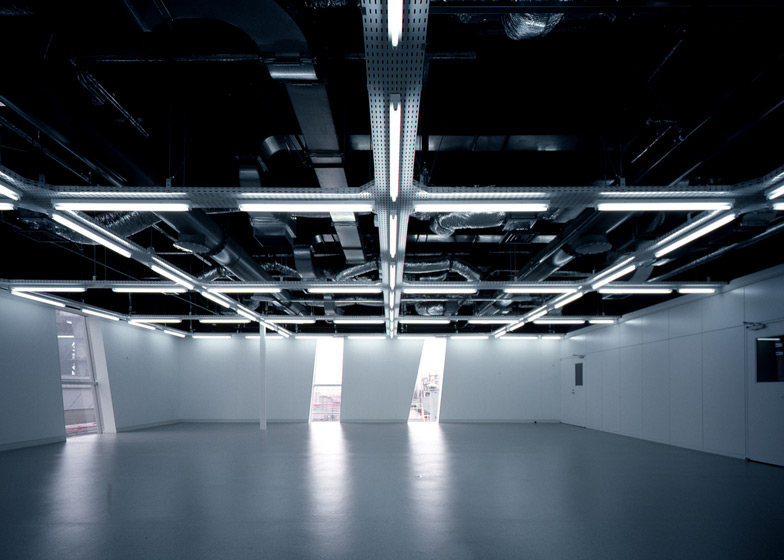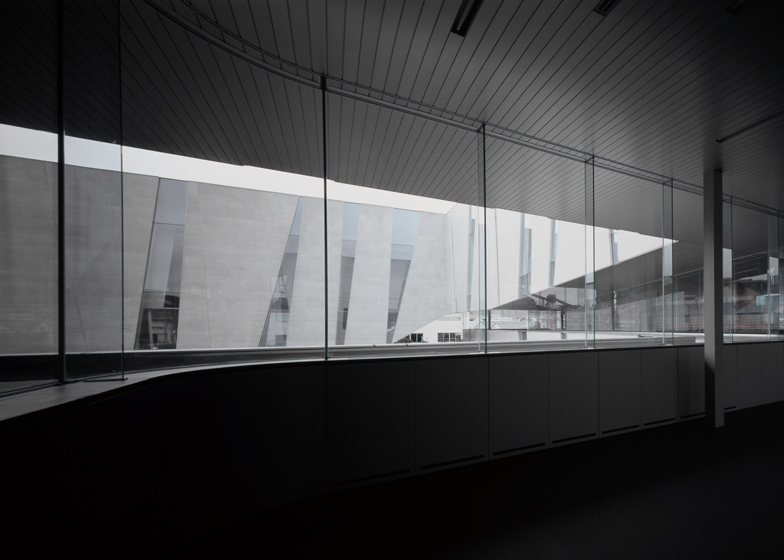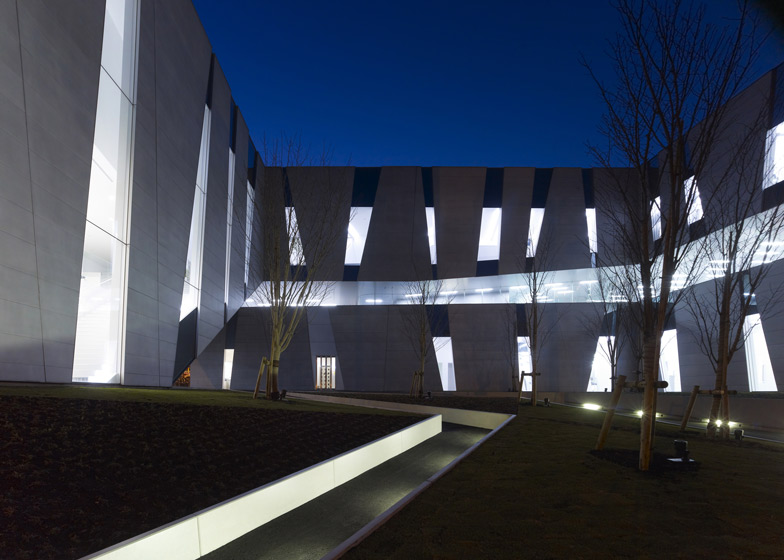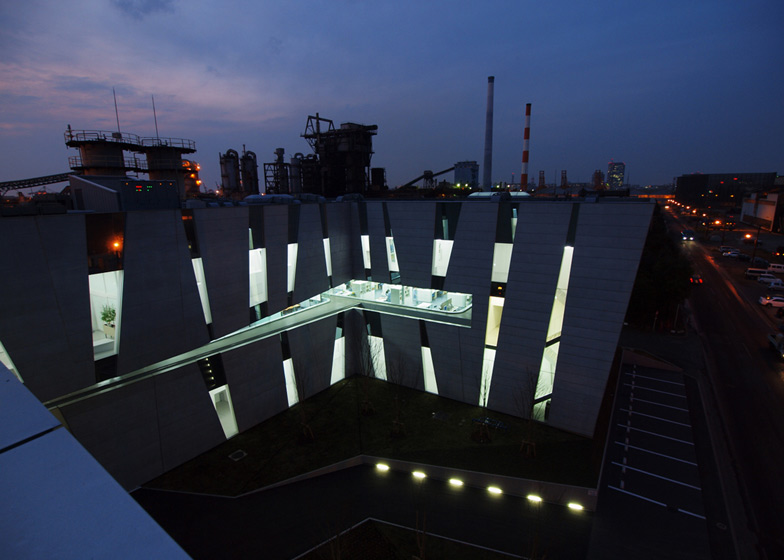The angled columns of an earthquake-proof structure frame a series of window slits on the exterior of this Tokyo research laboratory by KINO Architects (+ slideshow).
Located in an industrial area beside Tokyo Bay, the building is used as a chemical research facility for a materials development brand and comprises a U-shaped block with a horizontal slice through its middle.
This slice offers clues about the internal arrangement of the building, which is based on the abstraction of a linear plan. KINO Architects planned a route through a reception, an auditorium, meeting rooms and laboratories, then stretched it through all three floors to create a loop from one ground floor entrance to another.
Offices and meeting rooms required the most privacy, so the architects located them on the middle floor where they can be separated if necessary.
Meanwhile, laboratories can be found on the ground and second floors and feature a modular grid of power inlets, drainage and water points, enabling a variety of different desk layouts.
The architects named the building Spiralab, as a reference to its looping interior layout. "The spiral shape responds to the three requests: research efficiency, high-security and comfort," they explained. "Also, the spiral form becomes the key to the last request - symbolism. We think that true symbolism of architecture comes from the architecture itself; designed through logical thinking."
The earthquake-proof structure is described as a cross between a rigid frame and a truss framework, with angled columns that can take both horizontal and vertical stresses. A curtain wall structure is constructed in front and clad with concrete panels to give the building its smooth grey facades.
Japanese studio KINO Architects have offices in both Tokyo and Shiga. Previous projects by the firm include a house with four attics and a concrete residence with views of a nearby castle. See more stories about KINO Architects on Dezeen.
Photography is by Hiroyuki Hirai and Daici Ano.
Here's some more information from the architects:
Spiralab
A "Spiral" fills the needs.
This building is a new chemical research laboratory for a world leading materials development corporation. It is on a large site in an industrial area near Tokyo bay.
We responded to the request for "research efficiency" by using flexible experimental rooms where researchers can adjust their research space according to their needs. To the requests for "high security" and "comfort" we responded with high-security, and high-comfort offices and break areas throughout the entire building. We responded to the request for "symbolism" with symbolic architecture that helps promote the company's abilities to the world.
First, we horizontally aligned the main rooms: laboratories, an office, meeting rooms, an auditorium and a reception room along a common corridor and put the guest entrance and the researchers entrance at either end. By adopting a plan with a common corridor, the clients can freely select doorways and move partitions in the experimental rooms according to their needs. The security door is easily adjustable due to the linear shape of the plan and the separation of guest and researcher entrances.
Next, we transformed this linear plan in three-dimensions. The office and the meeting rooms need the highest confidentiality, so these were separated from the linear plan. The linear plan spirals around the office and meeting rooms. As a result the office and the meeting rooms are untouched by other rooms on every side, horizontally.
Vertically these rooms are in the centre of the spiral. Therefore the access to the experimental rooms on the upper and lower floors becomes easy. Additionally while these rooms have high-security the walls are transparent, giving a comfortable open-air atmosphere.
The break areas were made by widening the main corridor. As a result, researchers can take a break while changing rooms. In addition, the linear break areas spirals around the court yard. Therefore, this vertical plan allows the researchers to see the court yard from various points of view.
Architect: Masahiro Kinoshita / KINO architects
Location: Chiba, Japan
Principal use: research laboratory
Structure: steel
Scale of building: 3 stories
Site area: 600 ha
Building area: about 1300 sqm
Total floor area: about 3000 sqm
Above: site plan
Above: ground floor plan - click above for larger image
Above: first floor plan - click above for larger image
Above: second floor plan - click above for larger image
Above: cross section one
Above: cross section two
Above: long section
Above: plan concept
Above: earthquake-proof structure

